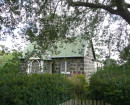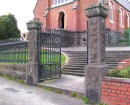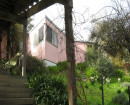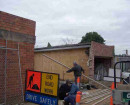Bruce Street Precinct
9-25 BRUCE STREET, 2-8 HERBERT STREET, and 17 MARY STREET, PRESTON, DAREBIN CITY
-
Add to tour
You must log in to do that.
-
Share
-
Shortlist place
You must log in to do that.
- Download report



Statement of Significance
What is significant?
The Bruce Street precinct comprises a group of early and mid twentieth century houses in Bruce, Herbert and Mary streets in Preston. These properties were created by a c.1890 subdivision by Henry Keele, who lived with his family in a house at the corner of Bruce and Mary streets. The lots were initially sold between 1890 and 1898, all but three to members of the Keele family. The first new houses at nos. 23 and 25 were constructed c.1909 by Arthur Keele at the western end of the street adjacent to the railway and the street was almost fully developed by the end of the 1930s. The houses in Mary and Mary streets were constructed between 1922 and c.1940 on lots created from a subdivision of the old Keele family allotment. All of the houses constructed between c.1909 and c.1940 survive today.
The following elements contribute to the significance of the precinct:
- The houses constructed in the period from c.1909 to c.1940, and any associated early (pre-WWII) outbuildings or garages.
How is it significant?
The Bruce Street precinct is of local historic significance to Darebin City.
Why is it significant?
Historically, the Bruce Street precinct is significant as an illustration of the significant development that occurred in Preston in the early to mid twentieth century and spans the revival in the Federation era and the boom that occurred after the First World War. It is also of interest for its associations with the Keele family. The historic value of the precinct is enhanced by its high degree of integrity. (AHC criteria A.4, D.2 and H.1)
-
-
Bruce Street Precinct - Physical Description 1
This is an early twentieth century residential precinct. It comprises detached single storey houses with relatively consistent set backs from their street boundaries. The siting of these houses behind mature front gardens and opposite the Preston City Oval, give them a pleasant northerly aspect; and from this reserve they are viewed as a relatively intact and cohesive group with related siting, scale and form, reflecting key phases of the development of Preston in the early twentieth century.
Stylistically the houses in this precinct range from large Edwardian villas to modest bungalows, some of which are State Savings Bank designs. At the west end of Bruce Street are the three Edwardian houses that were possibly built by (and perhaps designed by) Arthur Keele, who lived at no.23. They are all relatively intact and share with similar detailing (e.g., pressed metal and other detailing to gable ends), which appears to support the theory of a single designer/builder. At the east end of the street are two single-storey clinker brick Inter-war houses in the English Vernacular-style, including the former Box house at No. 9. These houses also have stylistic similarities and in architectural embellishment, and may have also, too, been designed by one architect/designer.
Heritage Study and Grading
Darebin - Darebin Heritage Study
Author: Context P/L
Year: 2011
Grading: Local
-
-
-
-
-
BROADHURST TANNERY
 Victorian Heritage Inventory
Victorian Heritage Inventory -
COUNCIL CLUB HOTEL
 Victorian Heritage Inventory
Victorian Heritage Inventory -
ZWARS TANNERY
 Victorian Heritage Inventory
Victorian Heritage Inventory
-
'Aqua Profonda' sign wall sign, Fitzroy Swimming Pool
 Yarra City H1687
Yarra City H1687 -
'DRIFFVILLE'
 Boroondara City
Boroondara City -
1) WEATHERBOARD FARM HOUSE AND 2) THE OUTBUILDINGS
 Nillumbik Shire
Nillumbik Shire
-
-









